Revisiting Toast: Making A Cup of Housemaid's Coffee
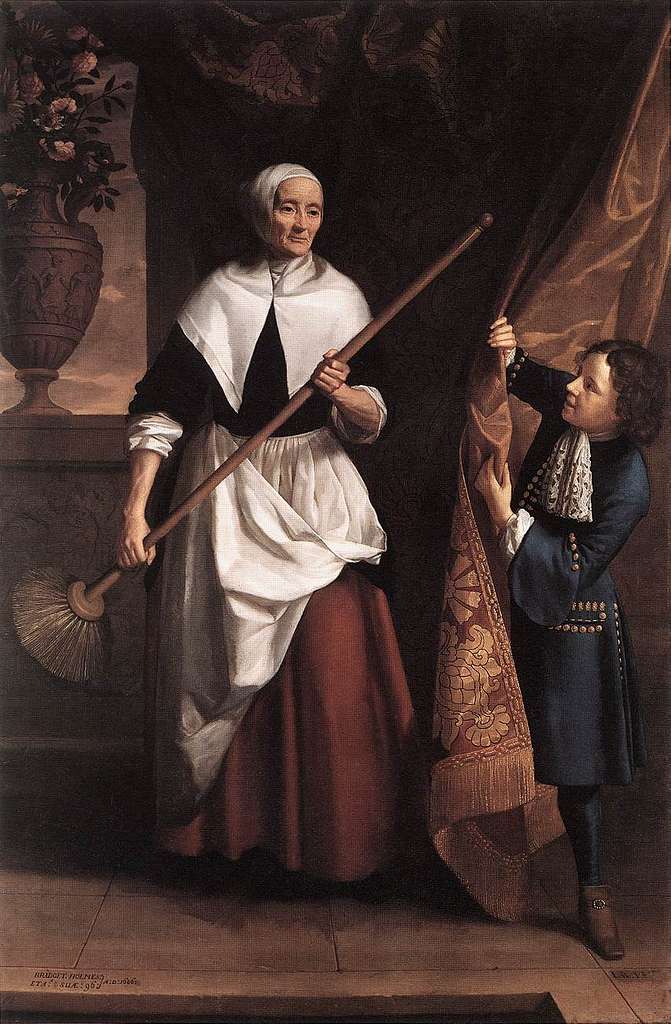
A mystery.
It's owing entirely to my own poor memory that I ever learned of the unexpected connection between Colette's Chéri and M. John Harrison's In Viriconium, the former being a French novel from 1920 about a May-December romance between a middle-aged courtesan and her best friend's twenty-five-year-old son, the latter being the third in sci-fi legend M. John Harrison's Dying-Earth Viriconium series, released in 1982.
Of the two, I've only read Chéri (if I am being scrupulously honest, I only decided to read it after the Michelle Pfeiffer/Rupert Friend movie came out in 2009. It was the FS&G reissue of the Senhouse translation. If I am being even more scrupulously honest, it says something about me that the most memorable line from a book almost entirely about sex and love was, for me, a description of breakfast). Back in 2017, almost all of Chéri had vanished from my brain, and only the idea of "housemaid's coffee" remained. I began to worry I had invented the whole thing, until finally I stumbled on the right key search terms and found the relevant passage:
I just spent twenty minutes googling "housemaid's coffee" convinced I had hallucinated it BUT EVERY SENTENCE OF THIS IS !! pic.twitter.com/aKWvQD0GY5
— Daniel M. Lavery (@daniel_m_lavery) October 24, 2017
"Housemaid's coffee" sounds very much like that fortunately-departed genre of invalid food, which is mostly just different methods of combining milk and bread, like sops and sippets and milk-punch, or for the really adventurous, a soft egg custard. M.F.K. Fisher's An Alphabet for Gourmets says that "[Milk toast] has been a source of reassurance and moral and physical strength for hundreds of years, I am sure, and like many such friends, it perhaps does its best work when eaten in solitude." It's the sort of food I like the idea of (nourishing, simple, hearty, fortifying, a byproduct of a wholesomer age than this one) much more than I like to eat.
But Colette has such a way of dressing up the basics! (Understandable, given the subject matter.) Creamy milk, well sugared, slowly re-heated, browned until a succulent crust forms. It's less reminiscent of the Turkish Delight section of The Lion, The Witch and the Wardrobe and more like that bit from The Silver Chair where C.S. Lewis implicates the reader with an aside about how good the sausages that the children ate that day were, splendid and bursting with fire and clear juice, not like those awful sausages you're always eating that are stuffed with old bread and sawdust and train tickets. It almost sounds exotic! And there is something of the childhood fantasy in housemaid's coffee; for all that youthful play can tend toward the dramatic, I remember just as often delighting myself by pretending to be a wizened old cottager, eating a homely bowl of soup shut up against a storm – a cozy playing-at industriousness, worthiness, hard-working virtue. Crumble up a bit of buttered toast in your milk and then wash the front steps until they shine, a dream straight from Heidi herself!
Then I forgot about the whole thing for a good five years. At this point the idea reemerged as "housemaid's tea," once again all memories of Colette left me, and I once more took to Twitter for help. The plot (much like housemaid's coffee!) thickened at this point, when someone else remembered a strikingly-similar passage from M. John Harrison's In Viriconium, published some sixty-two years later:
It's in the third Viriconium book. pic.twitter.com/OIG8n7N4SJ
— Does anyone in this book even know HTML? (@arnhold_paul) December 12, 2022
I've never come across this idea in any other book, or anywhere online for that matter. I suppose it's possible that this was once a popular drink among European housemaids, but somehow the only remaining references to it are in these two books. That seems unlikely! I'm more inclined to think that either Harrison snuck in a blink-and-you'll-miss-it reference to Colette out of cheek, or that he himself read Chéri ages ago and forgot where he'd picked up the idea.
Of course I had to make it.
Housemaid's coffee
- Buttered toast (since there are so few ingredients I used the absolute nicest bread I could find, which is the milk bread from ACQ. $12 a loaf but worth every penny.)
- Well-sugared milk (all I had was milk from the CVS; it's perfectly fine milk but nothing special. To boost the odds I used some leftover cinnamon-vanilla sugar I mixed last week to have on hand for my normal coffee.)
- Also some toffee sauce I had on hand in case things went south and the drink needed rescuing
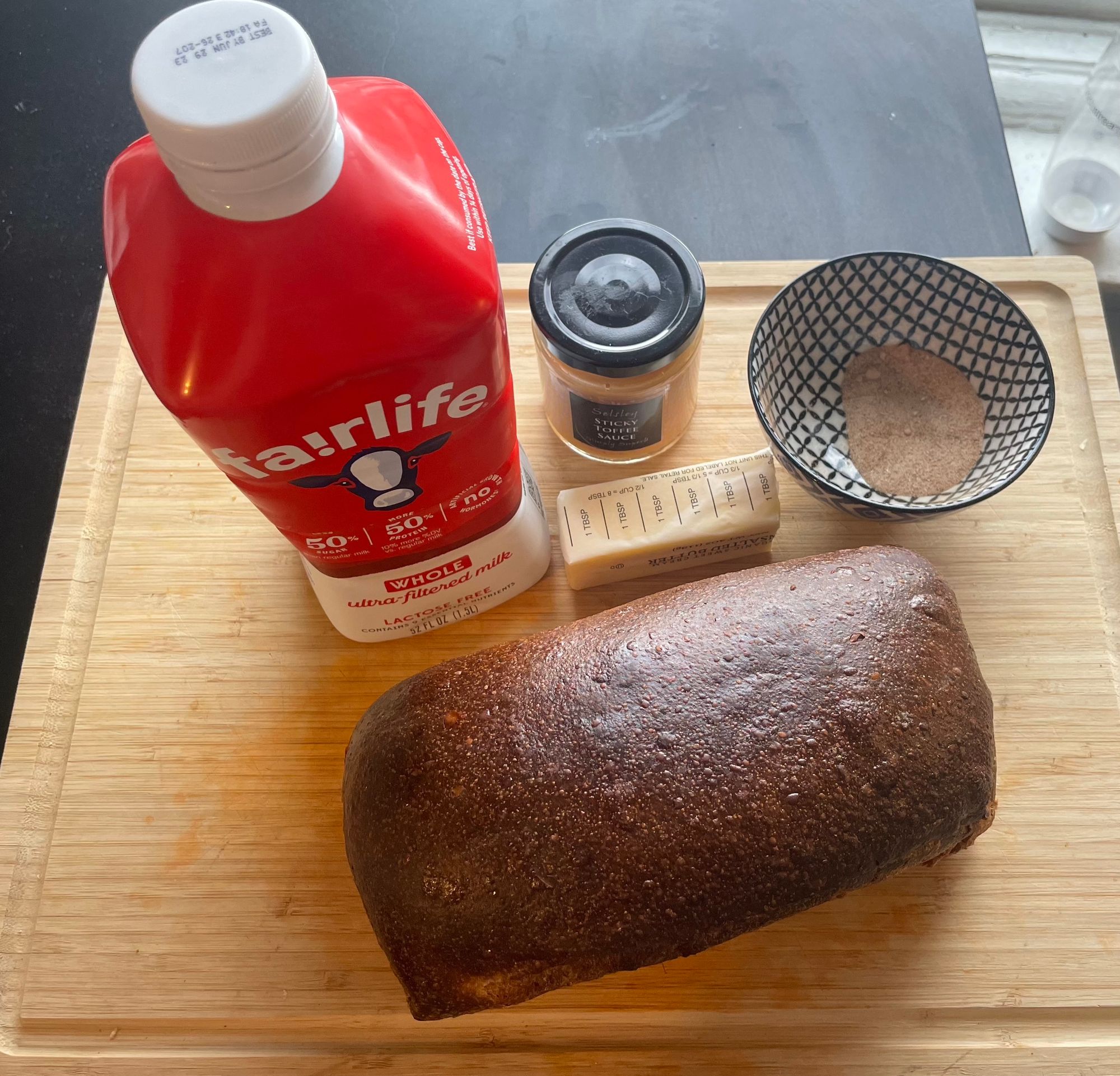
Then I toasted the bread. Pretty straightforward! Smelled amazing.
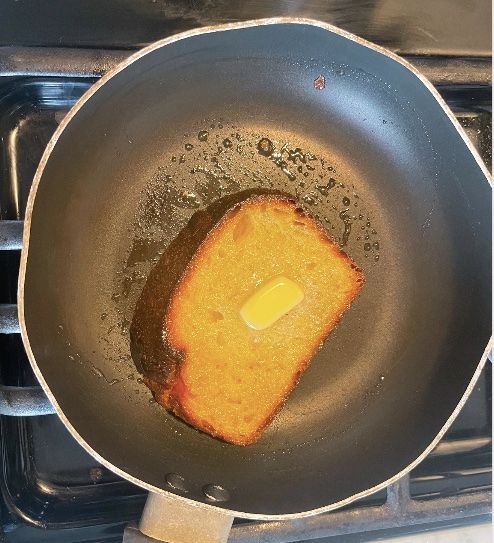
This was just the milk and sugar warming up. So far things still mostly just smelled of fresh toast. Not bad!
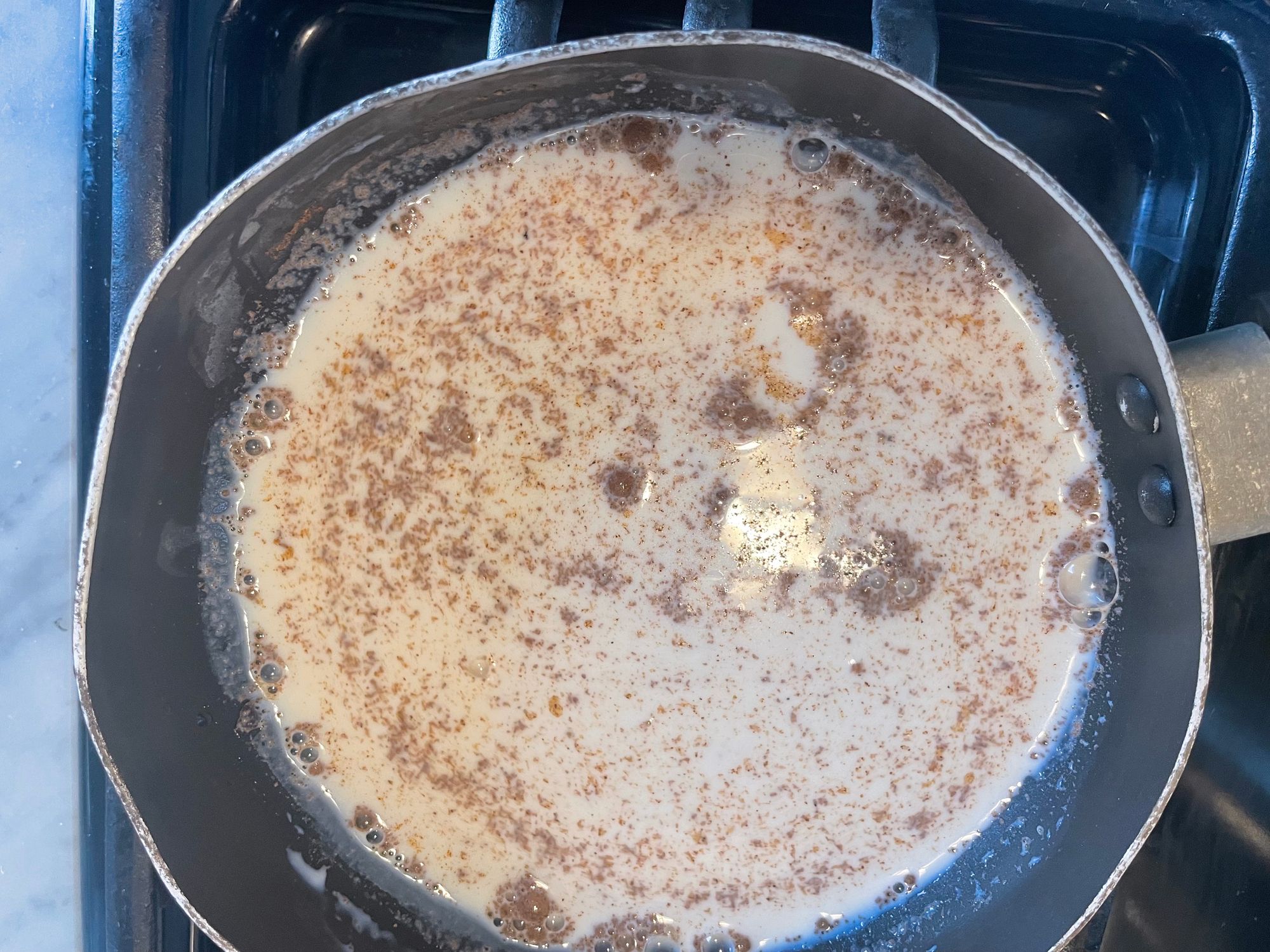
I'm willing to bet that the thoroughness and assiduity with which a 1920s-era housemaid at a chic house in Paris might crumble thickly-buttered toast into well-sugared milk beats my strategy of cutting the toast into cubes and tossing them in the milk in handfuls. It looked bad.
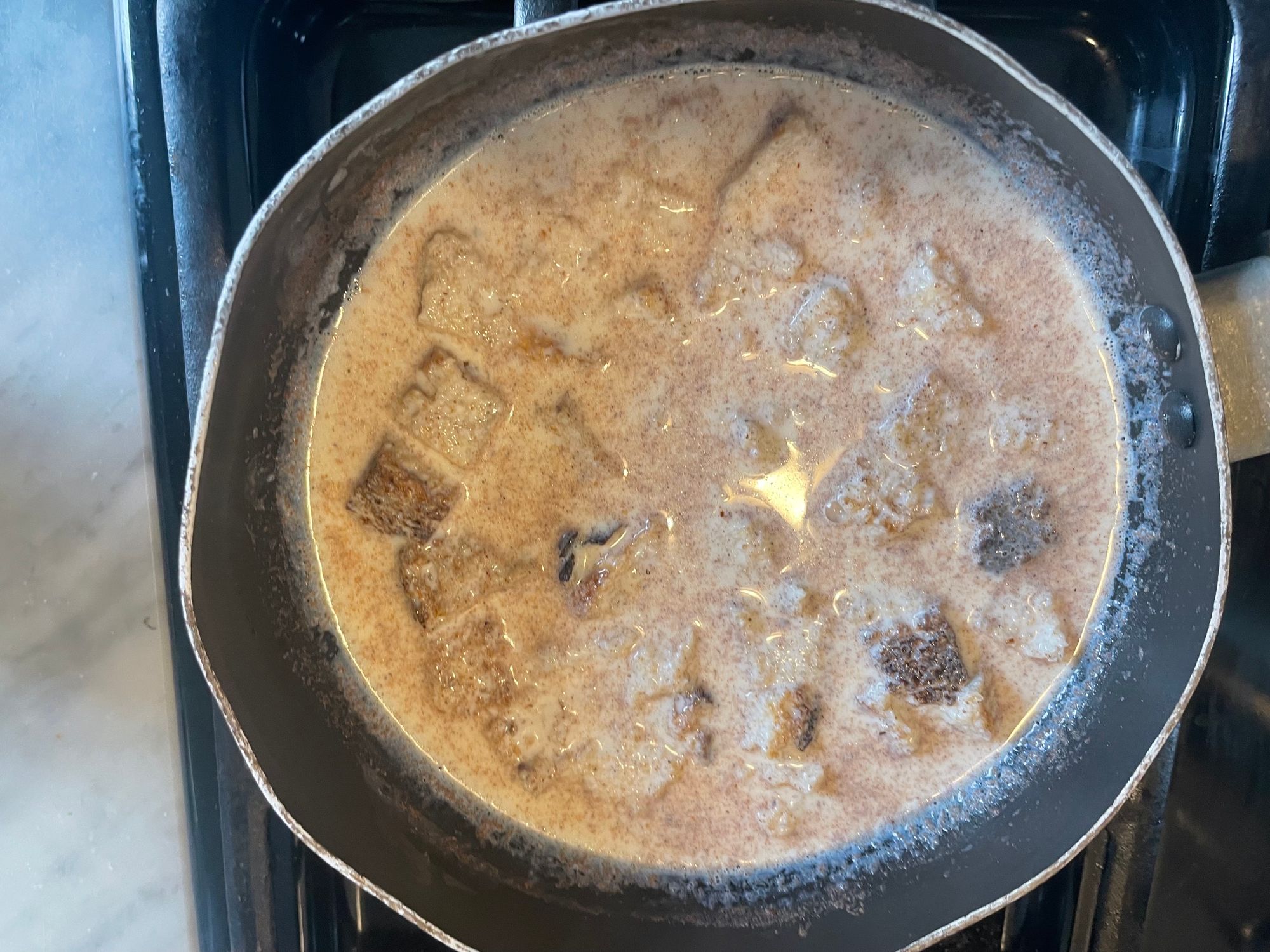
After a few minutes, the cubes weren't getting any crumblier, so I introduced an immersion blender into the equation. This solved my "wet crouton" problem but introduced a new problem: Incredible density. It was like carpentry glue. And no matter how long it glurgled and bubbled on the heat, there was no crust forthcoming, succulent or otherwise. Totally crustless sludge. Smelled pretty good, though.
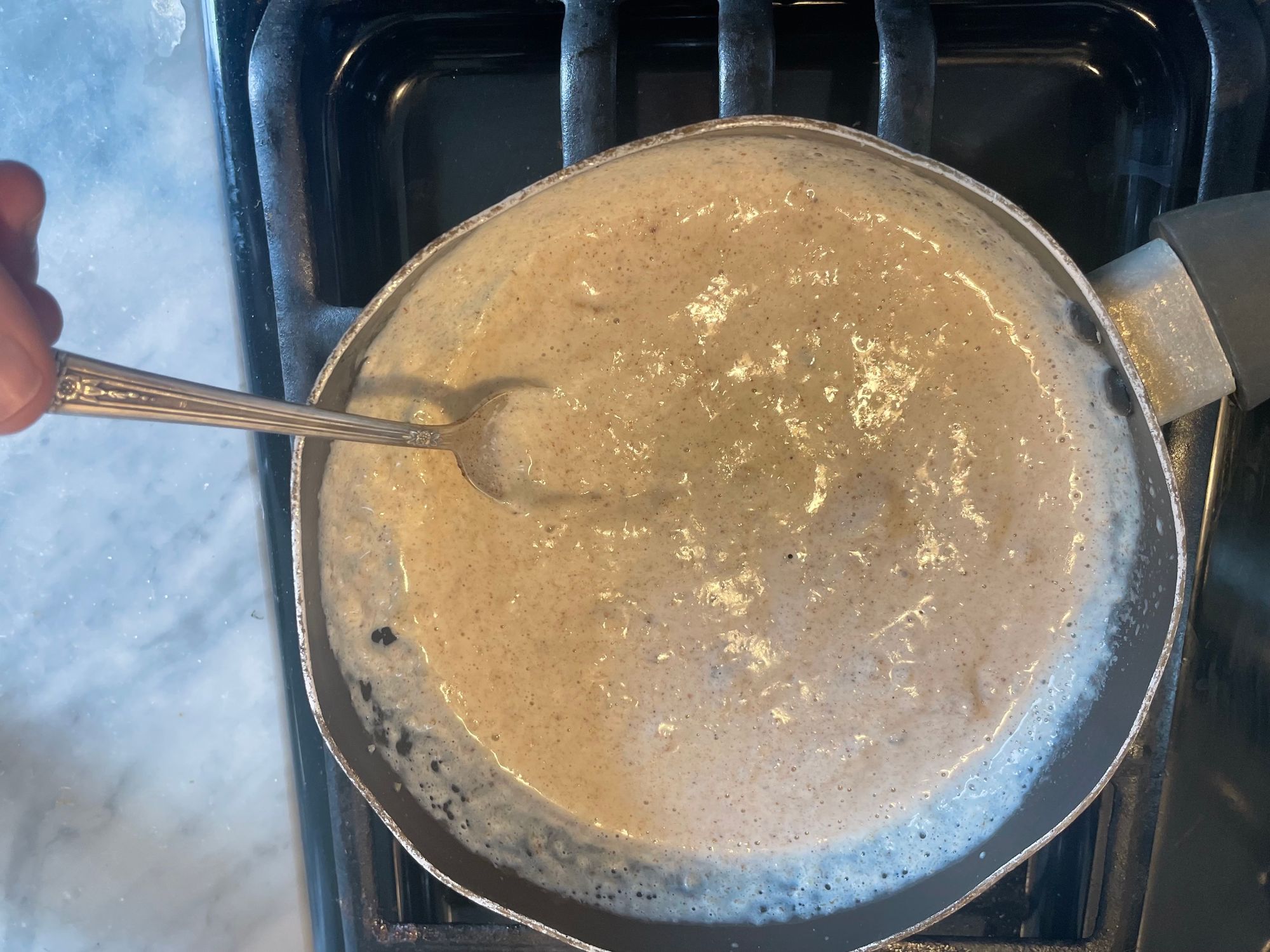
The best way I can describe the final result is "French horchata." I can see myself liking this in the 19th century, when there's not better food available! Obviously this is not coffee. It does not do what coffee does. But it's warm, and hearty, and I could see myself nursing this peacefully while I beat some rugs with those old-fashioned tennis rackets.
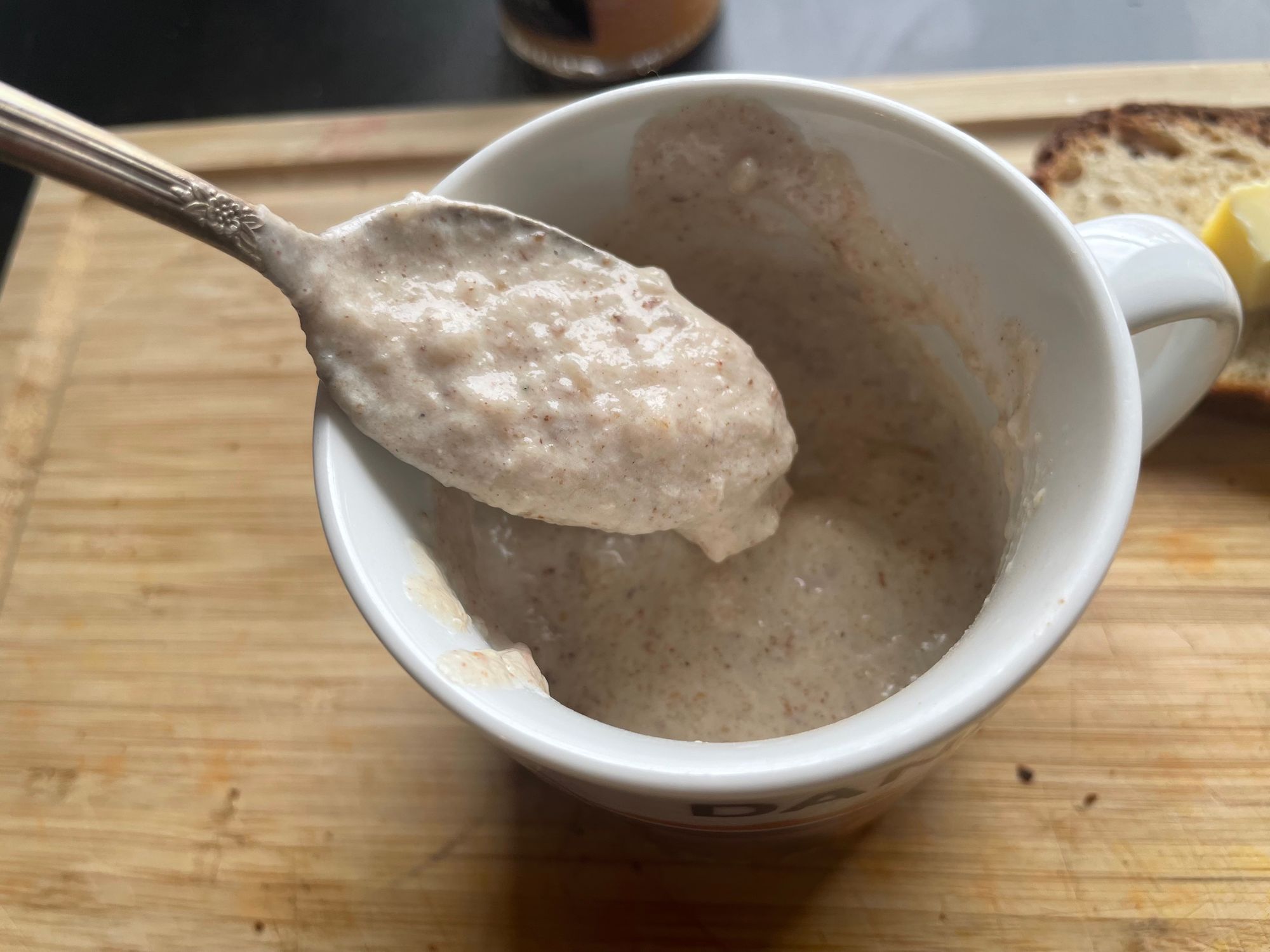
I would not make this again, but if I were a housemaid who relied on this beverage every day to get me through work, I would add more milk to start with, and crumble the toast in finely to begin with, to try to avoid making porridge. If you can remember any made-up-sounding food you've only ever heard about through books, send it my way and I'll try my best to recreate it.

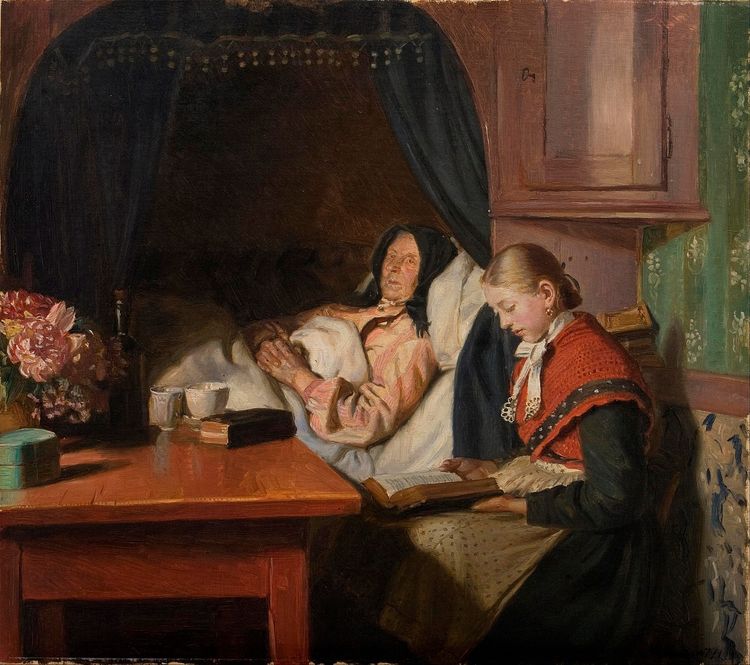
Comments ()